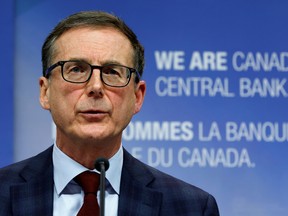Economic Analysis: A Closer Look at Canada’s Inflation Target and Central Bank Policies
In recent months, the Canadian economic landscape has been closely monitored as inflation trends have sparked debates about potential policy adjustments. This analysis delves into the current state of inflation, its implications for monetary policy, and the perspectives of key officials.
Polarizing Thoughts on Inflation: Pojarliev’s Analysis
The views on inflation in Canada are divided. Pojarliev posits that if inflation trends toward 5% by early 2023, it could surpass the target set by the Bank of Canada. This perspective suggests a cautious optimism among some economists, who anticipate moderate hikes to bring rates closer to target.
China’s Economic Impact: A Global Perspective
Meanwhile, China’s economic resilience is being closely watched as a bellwether for global markets. The country’s growth rate has been slightly above 6%, offering a positive outlook and supporting efforts to manage inflationary pressures.
Inflation Dynamics and Central Bank Strategy
The Bank of Canada is preparing its policy review, considering factors such as employment targets and an "average-inflation" approach. This strategy aims to balance inflation control with broader economic inclusivity, aligning with the Fed’s recent reforms.
Notable Voices in Monetary Policy
Key officials like Lael Brainard advocate for inclusive goals, emphasizing that maximum employment should be a priority. This perspective adds depth to discussions about how central banks can foster job creation while addressing inflationary pressures.
In conclusion, the Canadian economy faces a complex interplay of domestic and global factors influencing monetary policy. As the Bank of Canada considers its next steps, understanding these dynamics is crucial for policymakers and stakeholders alike. Further reading on specific policies or economic forecasts could provide deeper insights into navigating this evolving landscape.
